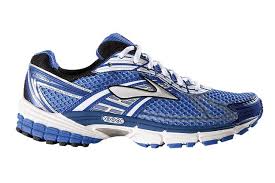 There are hundreds of running shoes on the market and new models introduced each year. Whether you’re a casual jogger or a competitive marathon runner, there’s a plethora of advice about how to choose the best shoe for you.
There are hundreds of running shoes on the market and new models introduced each year. Whether you’re a casual jogger or a competitive marathon runner, there’s a plethora of advice about how to choose the best shoe for you.
Some experts advocate for minimal cushioning in running shoes, and even for running barefoot. Others tout arch supports, heavily-cushioned shoes, or firm shoes designed to maintain stability. With all of the options out there, how does a runner really know which shoe to use? A new systematic review published in the British Journal of Sports Medicine explores that question.
Benno Nigg, an emeritus professor of kinesiology at the University of Calgary in Canada, reviewed studies about the connection between running shoes an injuries published in the past 20 years. Most of the studies investigated two main goals for running shoes: preventing pronation, when the foot rolls inward, and providing the proper amount of cushion to protect joints.
But in the review, Nigg and his colleagues found no evidence that pronating while you run leads to greater injury, or that using a stable shoe to prevent prontation helped to reduce injuries. They also found little evidence that shoes prevented injuries by altering the impact of striking the ground repeatedly, either with cushioned shoes or shoes with minimal cushioning.
But Nigg did find evidence that runners can improve their comfort level and reduce the risk of injury through a very simple process: selecting the shoe that feels most comfortable. The idea is that each person uses his or her own measure of comfort to chose a show that accommodates the way they run.
Our bodies are actually “very good judges” of how each of us should run, Nigg told the New York Times. And the risk of injury increases when we ignore out bodies’ natural movements. He advocates trying on four or five pairs of running shoes at the store, and jogging around in them. “People can usually tell right away which shoe feels the most comfortable,” he said. “That is the one to choose.”
The take-home message: The next time you’re shopping for running shoes, go for the ones that feel the best on your feet. That’s some easy-to-implement evidence-based advice!



This is not a question of confort. In a cushionied running shoes one is likely to land on a heel instead on the toe as when running barefoot. This has been proven as leading to injuries. Minimalistic shoes allow for a natural landing of feet – from toe to heel – the way our feet has evolved as we were roaming the savannah.
We can say we have some constants:
– the type of running shoes fits or moves with the way you run: so the most comfortable is the best if you are good at feeling that
– everybody must always improve how they run: so it is possible to change types of shoes
– many variables can influence how you run: time, pavement, climate, etc. : so it would be feasible to select pairs of shoes for each circumstance
Then, what are the best? To make it short, I think is not wrong to say the most comfortable.
Actually we have been doing evidence based merchandising for athletic shoes over the last 20 years.The structural parameters of running shoe indeed make a big difference in the individuals biomechanics.Our structural parameter testing is the key to shoe selection.We test for midfoot stability,rearfoot stability,cushioning,energy rebound and true loaded heel to toe ratio.For example,if someone has a problem with medial shin splints we would recommend a shoe with a high stability index to reduce pronation and tibia internal rotation to reduce the tractional forces on the posterior tibialis.To further reduce these tractional force we would recommend a shoe with a high true loaded heel to toe ratio.To recommend the proper shoe you must be able to identify it’s structural parameters and understand both biomechanics and sports medicine(the mechanism of injury).
where’s the proof for your anicdotal opinion craig. Your a salesperson not a scientist.
http://www.medscape.com/viewarticle/706399
Dr Coombs,hate to say this but i have had 45 years of experience in sport rehabilitation as a physical therapist.I have been associated with with Mark Reiley Md who invented the Ibone Ankle replacement and kyphoplasty for bone fractures.I hold 3 patents for structural parameter testing for athletic shoes.My method for shoe selection has been endorsed by The American Journal of Orthopedics.Your attitude is the very reason medical science does not move ahead.You rely on non evidence based information and in the box thinking.
Thanks for sharing the article with us.